Dive into the vibrant world of Molly fish, known for their peaceful demeanor and sociable nature. Molly fish, with their distinctive sail-like fins and lively personalities, add a touch of charm to any aquarium. As fish lovers seek to create lively and harmonious community tanks, the choice of tank mates for Molly fish becomes crucial.
Quick Answer:
Some live bearers like Guppies, Platy Fish, Swordtails, and Endlers are the best tank mates for Molly fish. Moreover, Zebra Danios, Neon Tetra, Minnow, Dwarf Gourami, Angelfish, and Snails are additional companions that you can consider as tank mates for Mollies.
This in-depth article will cover everything you need to know about selecting the best companions for your Molly fish, including those species you should avoid keeping with them. So, let’s start with, ‘What are the best tank mates for Molly fish?
With the proper information, you can create a safe, healthy, and active home for Mollies and their new fish friends!
Molly Fish Behavior With Other Fish
Mollyfish are known for their calm, peaceful temperament. They do very well in community tanks with other fish. Here are some key things to understand about how Mollies interact with tank mates:
1. Peaceful Nature
Mollies, by nature, are friendly and calm aquatic companions. Unlike some fish that may act territorial or aggressive, mollies tend to keep to themselves, creating a peaceful environment in your aquarium.
One of the great advantages of having mollies is their non-aggressive behavior towards other fish in the tank. You won’t find them picking fights or intentionally bothering their tank mates. This peaceful disposition opens up a world of possibilities when it comes to selecting suitable companions for your mollies.
It’s essential to note that while female mollies typically maintain their peacefulness, male mollies can display occasional aggression. This is more likely to happen during their mating season or when the tank becomes too crowded.
2. Social Behavior
Mollies are known for their social nature, adding an extra layer of vibrancy to your aquarium. These fish appreciate the company of their fellow tank mates and often form loose schools as they swim and explore their aquatic surroundings.
Their unique shoaling pattern involves preferring the company of other mollies and peaceful, shoaling fish. Mollies derive comfort and joy from being part of a group, showcasing a natural inclination towards social behavior. Unlike some solitary species, mollies tend to feel stressed and fearful when left alone.
3. Don’t Mind Activity
Mollies bring an energetic vibe to the aquarium, yet they are remarkably adaptable and don’t mind having calmer tank mates. This flexibility makes them suitable companions for a variety of fish with different activity levels.
In their active chasing, mollies might engage in a curious behavior of nibbling on things, testing the waters to see if their tank mates are edible. This is a natural expression of their curious nature. Interestingly, if their tank mates happen to be slower in their movements, mollies are known for their “don’t mind” attitude towards varying activity levels.
4. Dislike Aggression
Mollies thrive in peaceful aquatic environments, and the presence of aggressive tank mates can induce stress in these gentle creatures. Mollies particularly dislike fish that display nippy, pushy, or territorial behaviors, as it disrupts their calm and peaceful disposition.
It’s crucial to be mindful of the type of companions you introduce to the tank, as aggressive behavior in fellow tank mates can be especially stressful for female mollies. Even though male mollies are generally peaceful, their territorial instincts might lead to fin-nipping behaviors.
5. May Chase Smaller Fish
In a rather surprising twist, mollies may tend to chase fish considerably smaller than themselves. This behavior is rooted in their perception of smaller fish as potential food sources, leading to nibbling tendencies. Mollies, at times, may display a bit of a bully attitude, especially towards smaller fish, showcasing territorial instincts.
Overall, Mollies are one of the most peaceful and community-friendly freshwater fish. But their gentle nature means aggressive fish or very small fish are not good tank companion choices.
Best Livebearing Tank Mates for Molly Fish
One of the best options for Molly’s tank mates is other livebearers. Livebearers are fish that give birth to fully formed, live fry instead of laying eggs. This internal gestation period and birth process make them similar to Mollies in care needs and behavior. Some great livebearing tank mates include:
1. Guppies
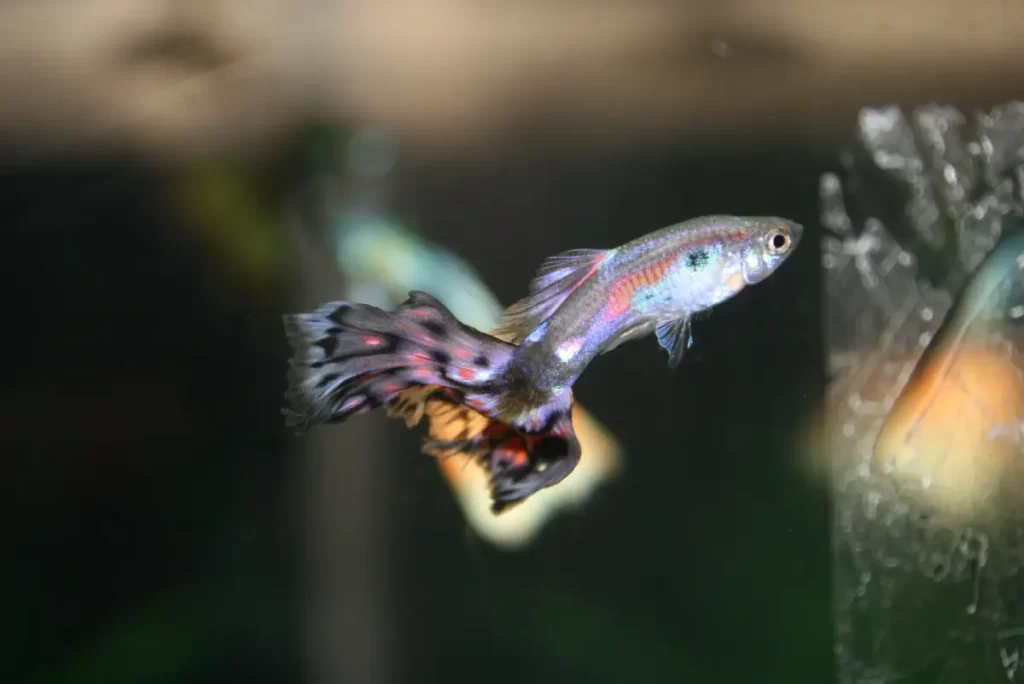
Guppies are extremely popular freshwater fish for community tanks. They stay under 2 inches in length and come in endless colorful strains. Known for their energetic and peaceful demeanor, they make fantastic companions for mollies in your aquarium.
What makes guppies an ideal match for mollies is their shared preference for calm tank environments. Both species thrive in similar warm water conditions and have similar dietary needs, simplifying the task of caring for these lively aquatic friends.
However, it’s worth noting that male guppies have a habit of fighting among themselves. To keep the peace, consider maintaining a ratio of 2 or 3 females per male guppy. This ensures a more harmonious cohabitation in your tank.
While guppies and mollies share many similarities, it’s essential to be aware that mollies might occasionally express territorial behavior. To ease potential conflicts, provide ample space in the tank, incorporating hiding spots and plants. These additions create separation and contribute to a serene living space where guppies and mollies can coexist peacefully, showcasing the beauty of diversity in your aquatic world.
2. Platies
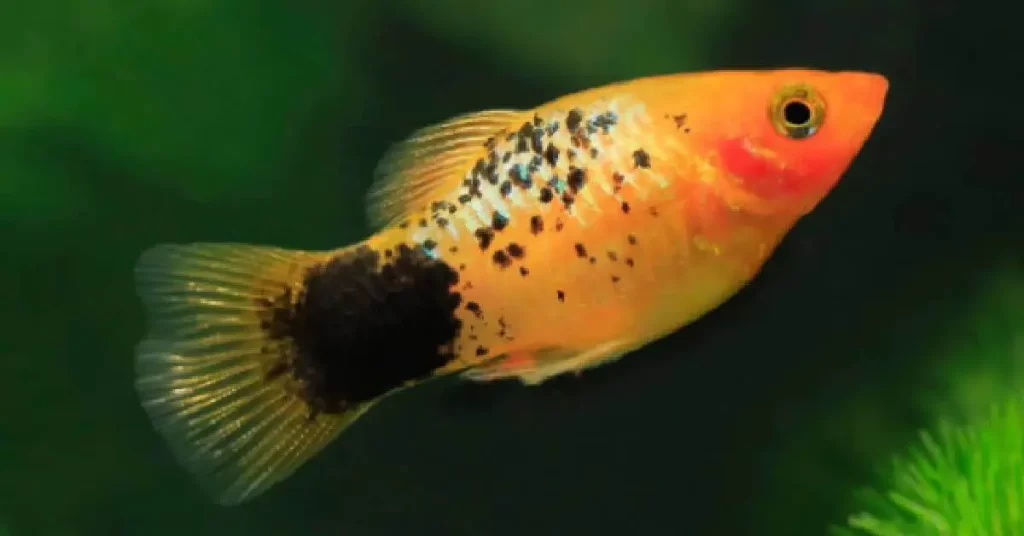
Platies are lively and colorful live-bearers that add a delightful touch to your aquarium! These petite fish, growing only 2-3 inches long, come in a stunning array of colors, including vibrant red, blue, yellow, and black. Much like mollies, platies prefer to stay mid-level in the tank and revel in the company of their fellow fish in group swims.
Platies are a fantastic choice for beginners due to their easy care requirements. Sharing similarities in care needs with mollies, they create a hassle-free environment for aquatic enthusiasts.
The synergy between mollies and platies extends beyond their visual appeal. They not only prefer similar water conditions and diets but also share a comparable size range (2-3 inches). This makes them an ideal pairing, creating a visually stunning and harmonious underwater landscape in your tank. As these two species swim together in schools, your aquarium will become a living canvas, showcasing the beauty of these aquatic companions in tandem.
3. Swordtails
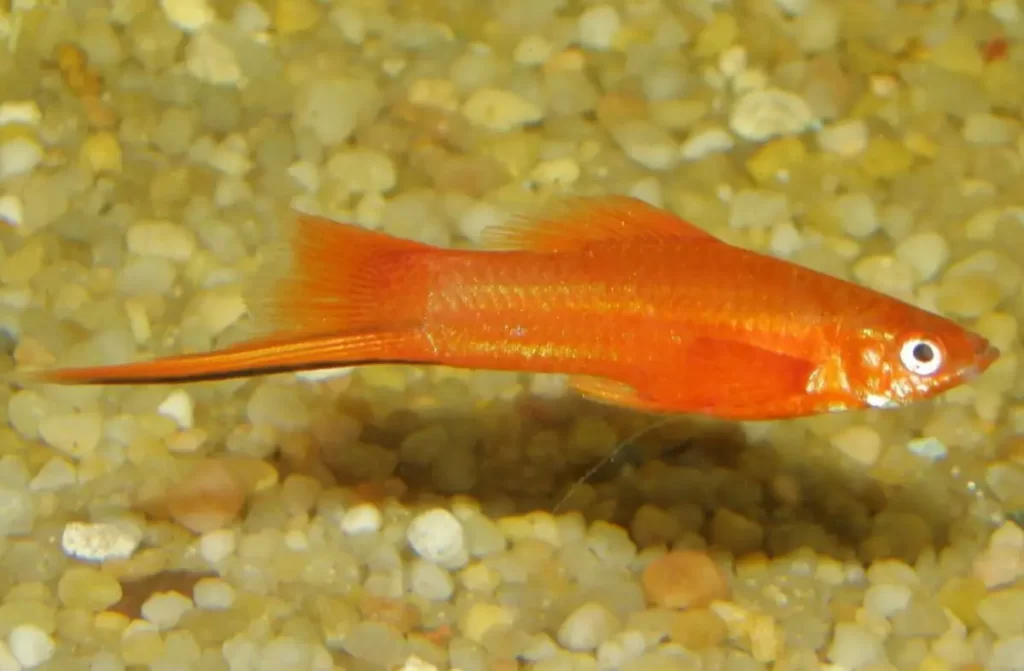
Swordtails with an elongated bottom fin that resembles a sword, are the aquatic showstoppers! These dynamic fish come in different range of colors and boast various fin varieties, adding a touch of elegance to your tank. Ranging from 2 to 6 inches in length, their size depends on the length of their distinctive tails. Aim for a minimum tank size of 15-20 gallons to accommodate these lively characters.
When it comes to water parameters, swordtails align remarkably well with the preferences of molly fish. Their shared status as livebearers makes them not only visually appealing tank mates but also ideal companions in terms of care requirements.
As you observe swordtails and mollies gliding together in your aquarium, you’ll witness a captivating underwater ballet. Their similar water preferences and livebearing nature create a seamless coexistence, turning your tank into a vibrant aquatic symphony.
4. Endler’s Livebearers

Endlers are small, colorful livebearers that stay under 2 inches long. They come in vibrant strains of yellow, blue, red, and orange. Endler’s livebearers are hardy, peaceful fish that are closely related to guppies. They readily breed and share tank space cooperatively with Mollies.
Despite their small size, Endler’s livebearers exude confidence and peace. Their cooperative nature ensures a harmonious cohabitation with mollies, as they readily share tank space. This makes them an excellent addition to your aquatic community.
While mollies generally won’t bother full-grown endlers, it’s essential to be mindful of potential interactions with endlers’ fries. Mollies may exhibit an interest in the fries, so providing ample hiding spaces or breeding traps can help protect the younger members of the Endler’s Livebearer population.
Other Suitable Tank Mates for Molly Fish
While livebearers are an excellent match, other fish types can work well with Mollies, provided their needs align. Here are some other fish that can make good Molly tank mates:
1. Corydoras Catfish

Corydoras Catfish are armored bottom dwellers that bring a unique charm to your aquarium. These active schooling fish grow to a modest size of 2-3 inches and gracefully navigate the tank bottom. Known for their peaceful temperament, cory cats not only add character to your tank but also contribute to its cleanliness by scavenging uneaten food from the substrate.
What makes corydoras catfish an excellent choice as tank mates for mollies is their non-competitive nature. They won’t fight with mollies for space or resources, fostering a stress-free environment for both species. The peaceful coexistence is further enhanced by their compatibility in terms of tank conditions.
If you are looking to introduce corydoras catfish to their aquarium, consider a tank size of at least 20 gallons to accommodate a group of these delightful bottom dwellers. As you observe these aquatic companions peacefully sharing the tank’s bottom regions, you’ll witness a harmonious underwater dance between mollies and corydoras catfish, creating a balanced and visually captivating aquatic community.
2. Zebra Danios
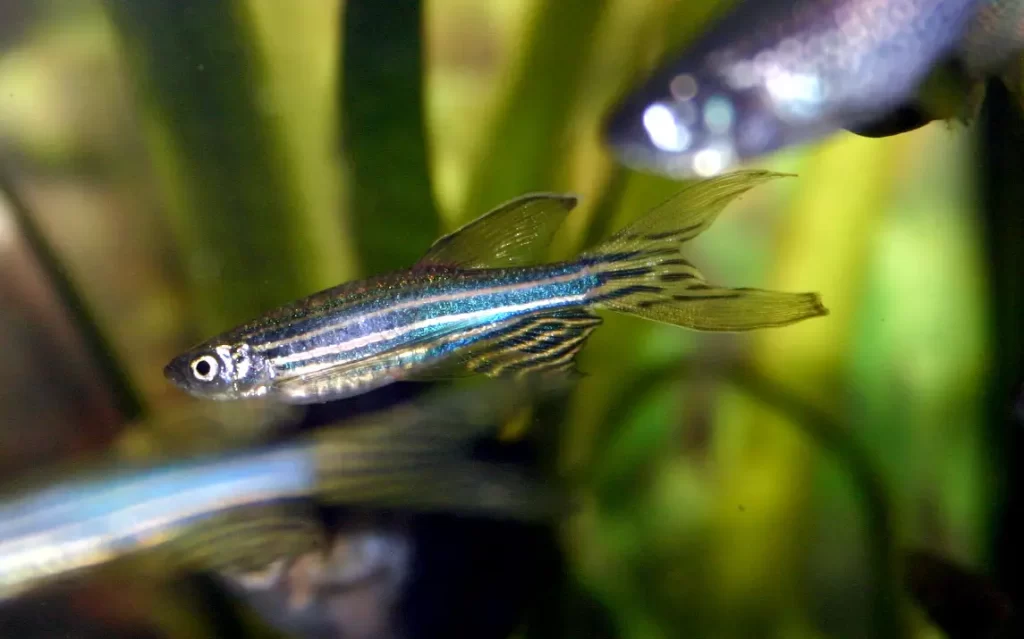
Zebra Danios are speedy little fish with striped color patterns. These petite wonders, measuring under 2 inches, add an energetic flair to your aquarium. With their habit of staying in the upper levels of the tank, Zebra Danios gracefully leave space for mollies to roam below.
Zebra Danios are known for their non-aggressive nature and are content with a diet of flakes or small foods. However, it’s essential to exercise caution with long-finned danio varieties, as their flowing fins might be susceptible to nipping by mollies.
Despite a slight difference in size, Zebra Danios and mollies share common ground in terms of temperature and water conditions, creating a thriving environment for both. While they are generally good tank mates, it’s crucial to be mindful of individual behaviors. Some mollies or Zebra Danios may display aggressiveness, impacting the potential for harmonious coexistence.
To ensure a successful partnership, observe the interactions closely and provide ample hiding spots or diversionary elements in the tank. With these considerations, you can enjoy the dynamic and visually captivating presence of Zebra Danios alongside mollies in your aquatic community.
3. Neon Tetras

Neon tetras are small wonders that bring a burst of color to your aquarium! These brightly colored schooling fish, reaching about 1.5 inches in length, are not only easy to care for but also introduce vibrant blue and red hues to your tank. With a peaceful demeanor, neon tetras prefer to school together in the middle of the aquarium, creating a visually stunning display.
Neon tetras prove to be excellent tank mates for mollies, sharing commonalities in size, water conditions, and a preference for planted tanks. Much like mollies, they thrive in soft water environments, contributing to a harmonious coexistence.
The compatibility extends beyond environmental preferences; both species have a similar taste in food. Mollies and neon tetras enjoy a variety of similar foods, making it convenient for aquarium enthusiasts to provide a well-rounded diet.
It’s worth noting that mollies, while sometimes territorial with their own kind, generally coexist peacefully with neon tetras. This makes for a dynamic and visually appealing aquatic community where mollies and neon tetras swim together in harmony, turning your tank into a captivating underwater canvas.
4. Otocinclus Catfish
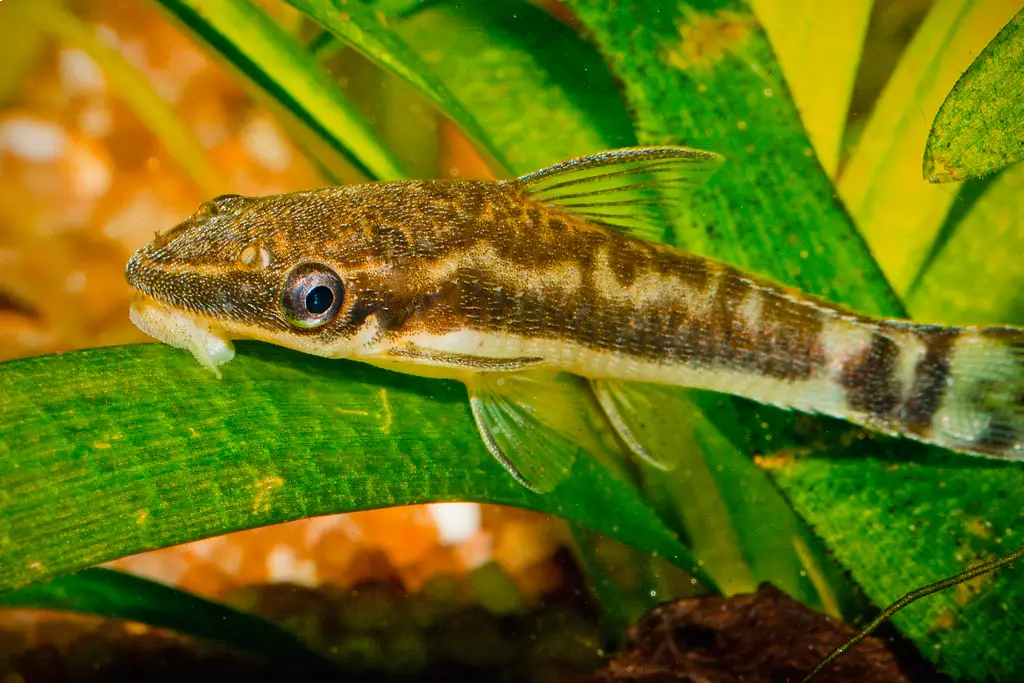
Often called “otos”, these tiny armored catfish only grow to 2 inches long. They are algae eaters, sucking on tank surfaces to graze. With their peaceful nature and commitment to algae control, otos make excellent companions for mollies in your aquarium.
What sets Otos apart is not just their small size but also their extraordinary peacefulness. They coexist harmoniously with other tank mates, including mollies, and are particularly notable for being the only fish that won’t dine on molly fry.
For those considering adding otocinclus catfish to their tank, a 20-gallon setup with ample hiding spots is recommended. This ensures a comfortable environment for these unassuming algae warriors, contributing to the well-being of your mollies and the overall health of your aquatic community.
5. Snails
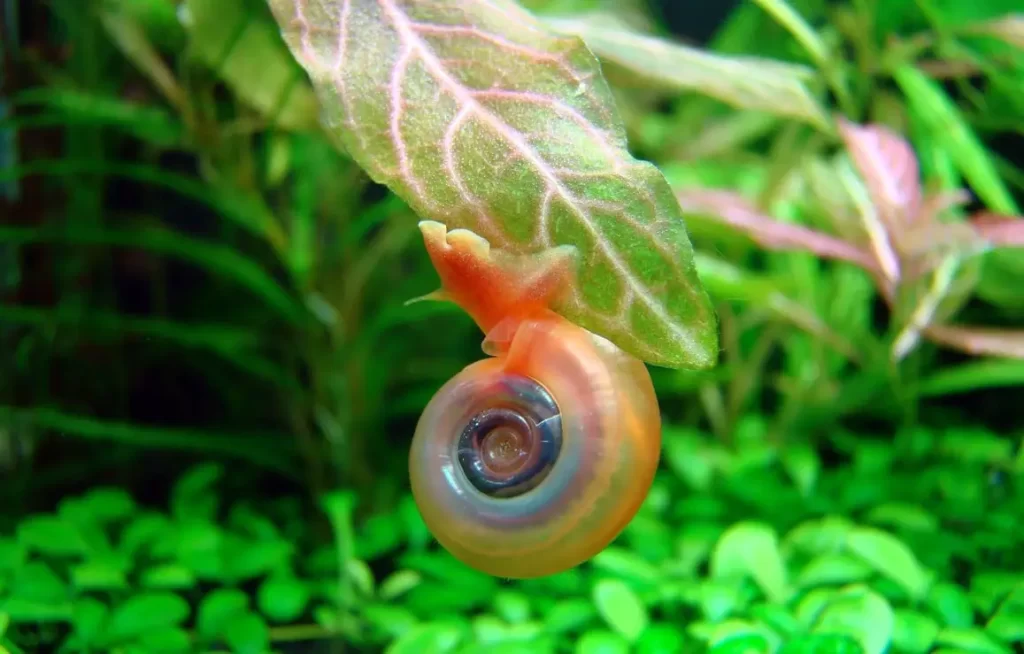
Snails add an intriguing touch to your molly tank. These small but mighty creatures play a vital role by consuming excess algae and leftover food debris, contributing to a cleaner and healthier environment.
While snails are generally suitable tank mates for mollies, it’s crucial to keep a watchful eye on interactions. Mollies may exhibit a curious nature, occasionally attempting to nip at snail eye stalks. To ensure the well-being of your snail companions, provide adequate vegetation and rocks for them to feel secure and avoid unnecessary stress.
One of the advantages of choosing snails as tank mates is their size – they are just right to avoid becoming a molly snack. This makes them an ideal addition to your aquarium, contributing to the overall balance and cleanliness of the tank.
Fish You Should Avoid Keeping With Molly Fish
While many fish can coexist with Mollies, there are some types that make poor tank companions. Steer clear of these fish in a Molly community aquarium:
1. Goldfish
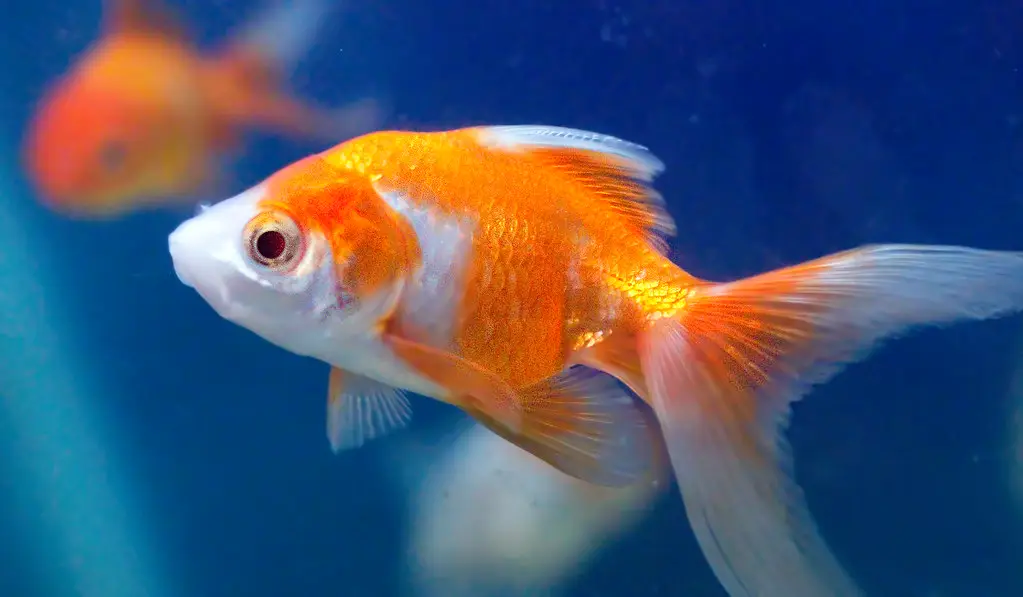
Fancy goldfish may be captivating, but they’re not the ideal companions for mollies due to distinct differences in their needs and behaviors. Goldfish thrive in cooler temperatures under 70°F, while mollies prefer the warmth of tropical waters ranging from 70-80°F, making it challenging to create an environment suitable for both. Additionally, the slow-moving nature of goldfish clashes with the active lifestyle of mollies, often leading to bullying.
Beyond behavioral issues, the molly’s tendency to nibble on goldfish body slime and the goldfish’s messy eating habits, producing a substantial amount of waste, further complicates compatibility. This can adversely impact water quality, making the tank environment less suitable for mollies.
2. Betta Fish
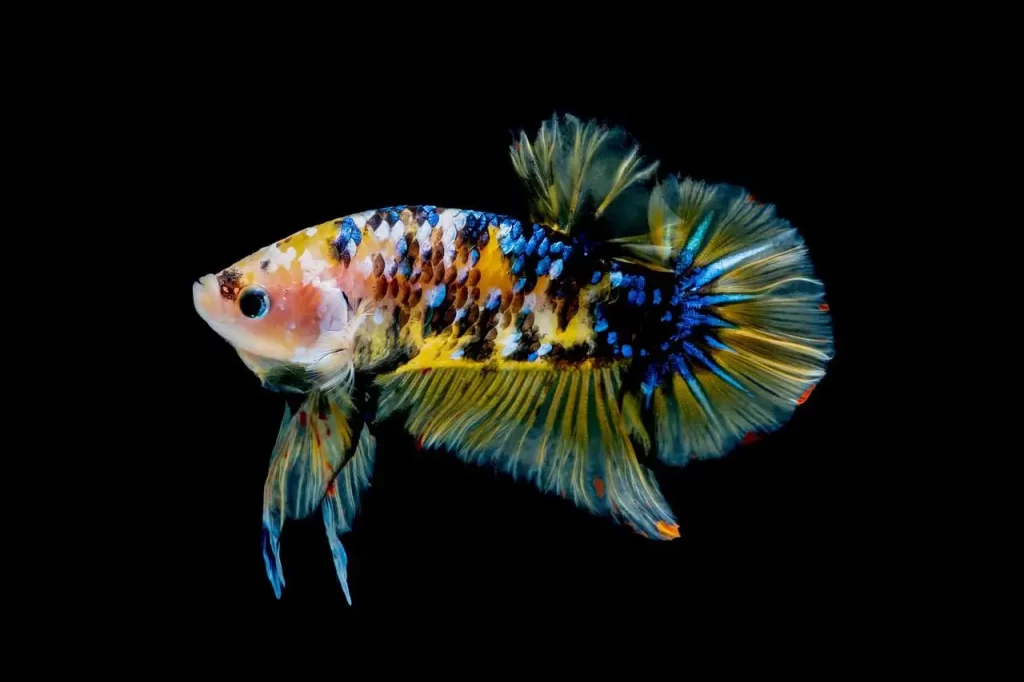
While betta fish are renowned for their vibrant colors, their aggressive nature makes them incompatible tank mates for mollies. Bettas, especially males, can be territorial and aggressive, particularly towards fish with long, flowing fins like mollies. This aggression can lead to stress and potential harm for both species, as mollies are also likely to nip at bettas.
Beyond behavioral issues, bettas prefer a solitary existence, and their low-activity temperament contrasts with the lively nature of mollies. This mismatch in activity levels and territorial behavior can create a stressful environment for both bettas and mollies. Additionally, differences in water requirements further contribute to their incompatibility.
3. Barbs
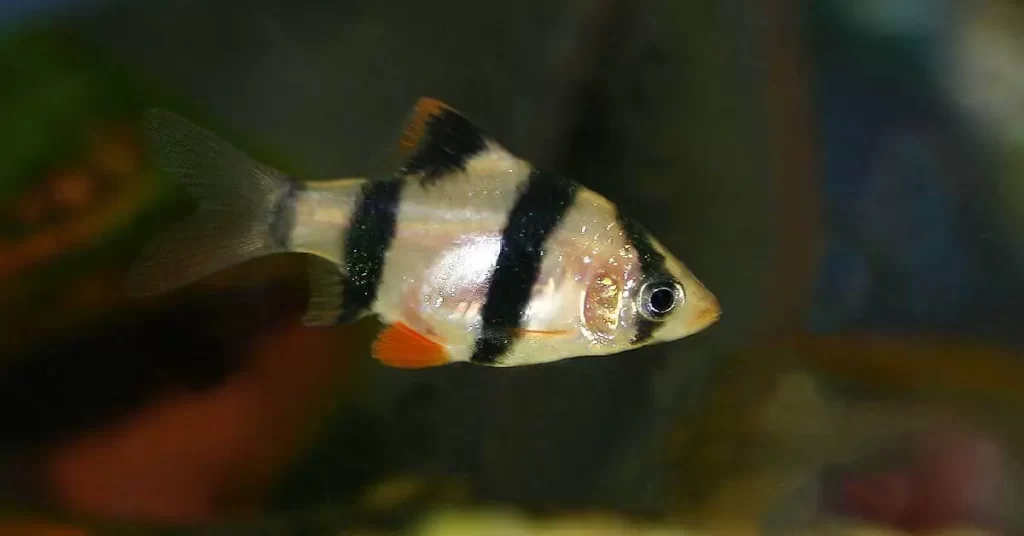
Barbs are not the best companions for mollies. Many barb species, including the notorious tiger barbs and cherry barbs, are known for their fin-nipping tendencies. Mollies, with their slow-moving nature and long fins, become easy targets for barb aggression and fin-nipping behavior.
The semi-aggressive temperament of barbs stands in stark contrast to the peaceful nature of mollies, creating a fundamental incompatibility in their temperaments. This difference in behavior can lead to stress for mollies and compromise their overall well-being.
4. Cichlids
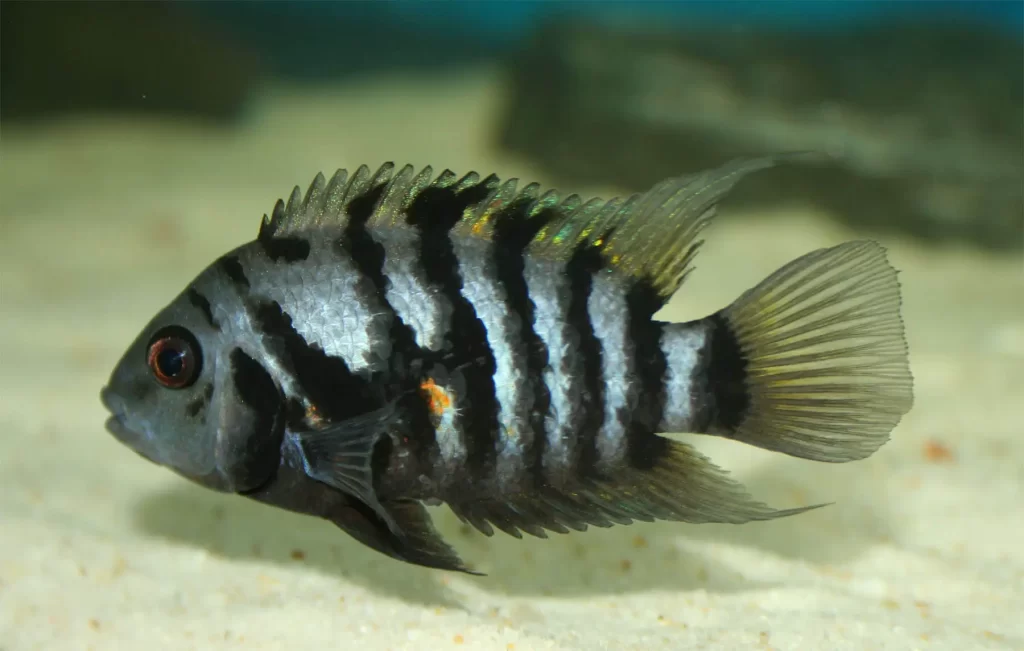
The vibrant and often aggressive world of cichlids, particularly African and convict cichlids, doesn’t harmonize well with the calm nature of mollies. These cichlids are known for their aggression, and housing them with mollies poses a significant risk. The aggressive behavior of cichlids can lead to harassment and even potential harm or death for more active tank mates like mollies.
Beyond their aggressive tendencies, cichlids have different water requirements and are generally slow-moving, which contrasts sharply with the needs and active nature of mollies. This mismatch in behavior and water preferences can attract unwanted attention from mollies, leading to unfavorable outcomes.
5. Shrimp
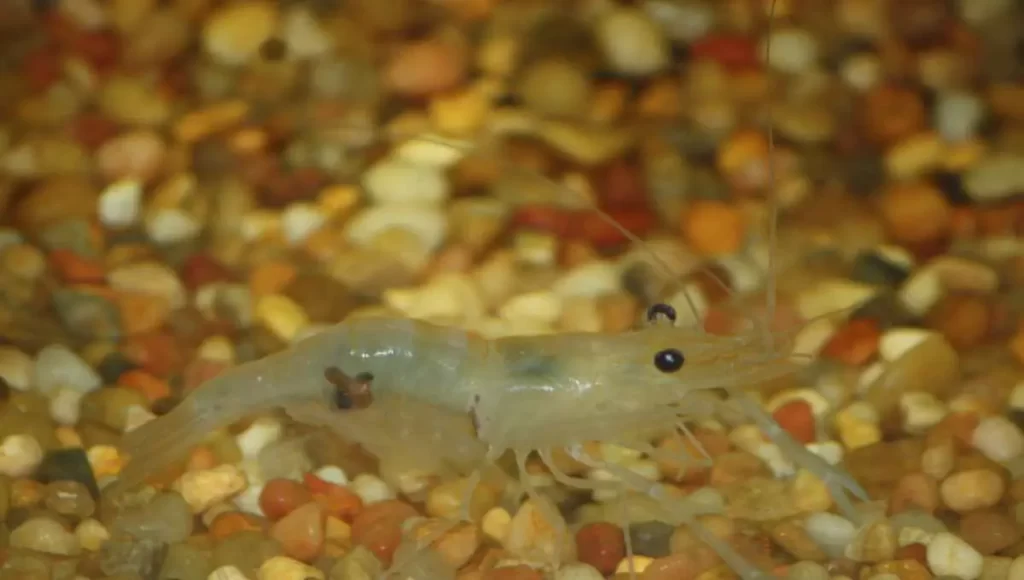
The delicate world of shrimp, particularly dwarf varieties like cherry shrimp or ghost shrimp, might not be the best fit for a tank shared with mollies. The small size of these shrimp makes them appear as tempting snacks to predatory mollies, posing a risk to their well-being.
Mollies, especially larger individuals, are likely to view shrimp as potential prey, making cohabitation a challenge. Beyond the risk of predation, the presence of mollies can make it difficult to ensure adequate feeding for the shrimp. Mollies’ predatory instincts may interfere with the shrimp’s ability to thrive in the tank environment.
6. Angelfish
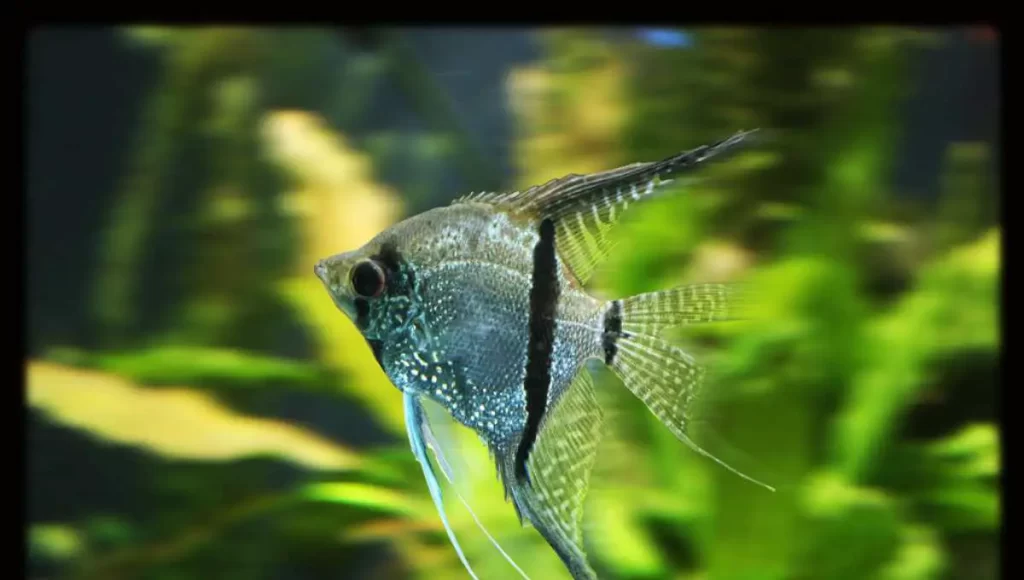
While angelfish may be recommended as potential tank mates for mollies initially, caution is advised as they mature. Angelfish, as they grow, tend to become territorial and aggressive, especially when establishing dominance. Their larger size can lead to bullying behavior, creating an inhospitable environment for mollies.
Angelfish, known for their striking appearance, can pose a threat to smaller mollies due to their size and territorial nature. While both are freshwater fish, the contrasting preferences in behavior and social dynamics make their cohabitation challenging. Angelfish often prefer living in pairs and are less active, while mollies are social and active, sometimes displaying bullying behaviors.
Tank Setup Tips for Molly Fish Tank Mates
When adding tank mates to a Molly aquarium, there are some important tank considerations:
1. Tank Size
When setting up a tank for mollies and their companions, think spacious! Aim for a minimum of 20 gallons, but if you can swing it, go for 30 gallons or more. This generous space not only accommodates the lively nature of mollies but also reduces the likelihood of territorial disputes among tank mates. Providing ample room for schooling fish fosters a more harmonious aquatic community.
With plenty of space to explore, mollies and their tank mates can indulge in their active swimming habits without feeling cramped. This not only reduces stress but also creates a visually appealing underwater haven.
2. Floating Plants
Give your tank mates a comfortable hideaway with the addition of floating plants like hornwort. These plants not only create a natural and visually pleasing atmosphere but also serve as a retreat for shy fish.
Shy buddies can take cover under the floating plant leaves, finding comfort in their own secret space. This is especially handy for mollies who may sometimes display bullying behavior. The floating plants act like nature’s curtains, offering privacy and reducing stress for all the residents in your underwater world.
3. Bottom Plants
Plant the groundwork for a thriving tank by adding bushy plants along the bottom. Varieties like Java ferns, anubias, and swords create boundaries, providing fish with intriguing spaces to explore. Beyond aesthetics, these plants serve a practical purpose by trapping fine particles of leftover food. This not only keeps the tank clean but also offers a meal for curious bottom-dwelling fish.
For smaller mollies seeking a safe haven from their larger counterparts, these bottom plants act as nature’s hideouts. They create cozy spots for the little ones to retreat, ensuring a balanced and harmonious environment for all your aquatic pals.
4. Driftwood & Rocks
Craft a functional underwater landscape by adding stacked rocks and driftwood pieces to your tank. Not only do they create visually appealing barriers between territories, but they also offer strategic spots for fish to pause and hide.
In this underwater playground, the driftwood and rocks serve as more than just decorations; they’re functional elements that contribute to a dynamic and interesting environment. Give your fish a space to explore, play, and find a moment of peace in the nooks and crannies of their rocky and driftwood haven.
5. Lighting
Find the sweet spot in your tank’s ambiance by opting for a moderate level of lighting – not too bright, not too dim. This Goldilocks approach to lighting is ideal for creating a comfortable environment where your fish can exhibit their natural behaviors. Proper lighting not only enhances the aesthetics of the tank but also contributes to the overall well-being of your aquatic friends.
With just the right amount of illumination, your mollies and their tank mates can showcase their vibrant colors and explore their underwater world with confidence. Strike the perfect balance with lighting, ensuring it complements the natural rhythms of your fish and transforms your tank into a captivating and harmonious aquatic haven.
6. Peaceful Fish Only
Keep the harmony flowing in your aquarium by selecting tank mates who share a love for peace. Stick to other peaceful community species and steer clear of troublemakers like fin nippers or aggressive fish. Mollies, with their gentle disposition, can feel stressed and fearful when surrounded by aggressive companions.
Choosing peaceful tank mates ensures a serene environment where everyone can coexist without unnecessary tension. Remember, a peaceful tank leads to happy and stress-free fish, creating an ideal aquatic haven for your mollies and their friends.
7. Nutrition
Ensure a feast for all by providing a diverse and nutritious menu for your mollies and their tank mates. A well-balanced diet includes quality flakes, pellets, and a mix of frozen and freeze-dried foods. Variety is the spice of life, and in this case, it ensures that all your aquatic pals receive the nutrients they need for optimal health.
However, there’s a savvy trick to keep in mind. While offering a diet suitable for mollies, be mindful of the sizes of the food particles. Opt for options that are suitable for both the smaller and larger mouths in your tank. This ensures that all inhabitants, big and small, get their fair share of the nutritional feast.
Frequently Asked Questions About Tank Mates For Molly Fish
Here are answers to some common questions about selecting suitable tank mates for Molly fish:
Are guppies good tank mates for Molly fish?
Yes, guppies are one of the best options for Molly tank mates. They are lively, share similar care needs, and are generally peaceful. Just limit males and provide lots of plants and hiding spots.
What fish should not go with Mollies?
Avoid housing Mollies with aggressive fish like bettas or cichlids. Also, do not mix them with nippy fish such as tiger barbs. Very small fish get eaten, and large or predatory fish may prey on them.
Can Molly fish live with angelfish?
Angelfish are not recommended tank mates for Mollies. While juvenile angelfish start peaceful, they often become more territorial as adults and may nip and harass docile community fish. Their larger size also lets them bully Mollies during feeding.
Can you put guppies and Mollies together?
Yes, guppies and Mollies are very compatible. They enjoy the same warm water conditions, have peaceful temperaments, and come from the same Livebearer family. A 20-gallon lightly planted tank with both guppies and Mollies can make a nice active community environment.
What Are The Ideal Water Parameters For Mollies?
The ideal water parameters for Mollies are:
Water Temperature: 70 to 80F (20 to 25C)
pH Range: 7.5-8.5
Water Hardness: 20 to 30 dGH
Do Molly Fish Eat Their Babies?
Mollies usually eat every tiny object that fits in their mouth. Here, the Molly babies are even smaller, which are likely to be the meal of their mother Molly once she notices them.
Yes, Molly fish eat their babies if they continue living in the same tank.
Are Mollies Aggressive?
Generally, Mollies are peaceful fish. However, they can get aggressive if the tank environment makes them uncomfortable. Overcrowded tanks, threatening tank mates, fluctuating water degrees, etc., can peak the aggression in Molly fish.
Conclusion
Finding the right tank mates for Molly fish comes down to selecting peaceful community fish that share similar tank requirements. Stick to livebearers like platies, swordtails, and guppies or schooling fish like tetras and danios. Avoid housing Mollies with aggressive fish species that may pester or attack them. With proper tank mates, Mollies will thrive in a friendly community aquarium.


